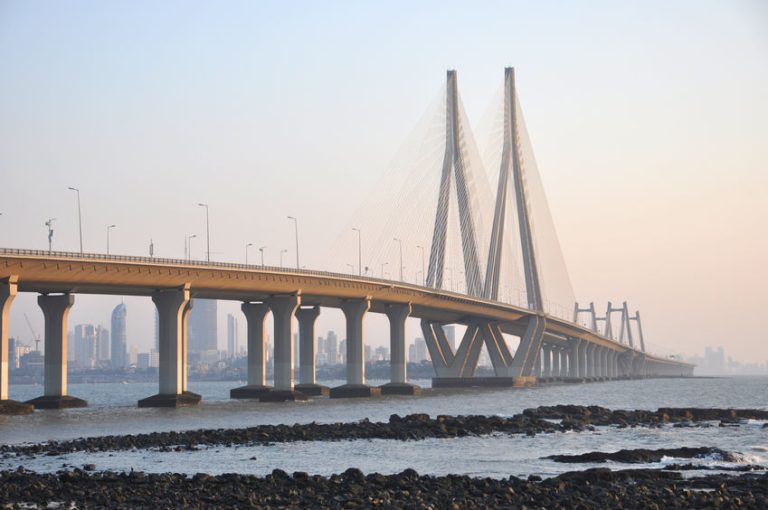The BSE Sensex and Nifty 50 indices pulled back slightly as some investors started to take profits. The blue-chip Nifty 50 index retreated to ₹25,000, down from the year-to-date high of ₹25,338. It has risen by over 233% from its lowest point in 2020.
The BSE Sensex was trading at ₹81,560, a few points below the year-to-date high of ₹82,764. Like the Nifty, it has risen by over 217% from its lowest level in 2020.
Indian rupee crash continues
The Nifty 50 and Sensex indices retreated as investors focused on the ongoing Indian rupee crash. The USD/INR exchange rate was sitting at 83.94, its highest level on record. It has risen by 1% this year and by almost 20% in the past five years.
Most analysts believe that the Reserve Bank of India (RBI) will not allow the rupee to weaken below the 84 mark against the US dollar. According to Reuters, the bank has been working behind the scenes to avoid it from falling below 84.
If the rupee continues to depreciate further, the RBI will likely intervene by using some of the $655 billion of foreign reserves to intervene.
The other option would be to start hiking interest rates, a move that would make Indian government bonds more attractive to investors.
The Indian rupee has weakened for several reasons. First, while India’s economy is growing, thee volume of foreign venture capital inflows has been weaker than in the past. The most recent data showed that VC funding for Indian companies rose by 42% in the first seven months to over $6.3 billion.
In the past, however, the country was seeing more investments as foreigners allocated to companies like PayTM, Oyo Hotels, and ByJu’s. In 2021, these investments jumped to over $38 billion. They then slowed to $25 billion in 2022 and $15 billion in 2022.
At the same time, India’s Foreign Direct Investment (FDI) has been in a slow uptrend, rising from over $44.4 billion in 2018 to around $70 billion last year. These inflows have helped to support the Indian rupee.
To some extent, the Nifty 50 and BSE Sensex indices do well when the Indian rupee is weak because many companies focus on exports. This includes firms like Tata Motors, Reliance Industries, Tata Consultancy, Vedanta, and Hindalco Industries.
Fed and RBI decisions
The Nifty 50 and BSE Sensex indices have also done well as investors as investors focus on the next actions of the Reserve Bank of India (RBI) and the Federal Reserve.
The next Federal Reserve monetary policy meeting will happen on September 19, and will likely have a big impact on US and Indian equities. Economists expect the Fed to cut interest rates now that the labor market is softening and inflation has retreated.
Data released on Friday showed that the unemployment rate remained above 4% in August as the economy added over 142k jobs in August. Fed rate cuts will likely fuel Indian stocks as American investors look for yield elsewhere.
The Reserve Bank of India, on the other hand, may decide to start cutting rates either later this year or in the first quarter of 2025 because of the stubbornly high food inflation rate in the country.
Top Nifty 50 index movers
The biggest mover in India was Premier Energies, which went public last week and has surged by over 50% since then. Premier Energies is a top company that focuses on solar energy in the country. It can manufacture 2 GW of solar modules each year.
The other top movers in India were companies like Paramount Cosmetics, Marshall Machines, Sonal Mercantile, and Capital India Finance.
Reliance Industries rose by over 2% while Vodafone Idea rose by 3% even after Goldman Sachs warned that it may crash by over 80% in the coming years.
Adani Group shares were in focus after a Kenyan court halted the transfer of Kenya’s Jomo Kenyatta International Airport (JKIA) to the company in a 30-year lease.
Nifty 50 index analysis
Nifty 50 index | Chart by TradingView
Looking at the daily chart, we see that the Nifty 50 index has been in a strong uptrend after bottoming at ₹16,820 in April last year. It has jumped by almost 50% since then as global stocks have rebounded.
The index has constantly remained above the 50-day and 200-day Exponential Moving Averages (EMA), meaning that bulls are in control.
It peaked ₹25,338 in August and then pulled back slightly to the psychological point at ₹25,000. At the same time, the Percentage Price Oscillator (PPO) has remained above the neutral point of zero.
Therefore, more Nifty 50 index upside will only be confirmed if it moves above the key resistance point at ₹25,338. If this happens, the next point to watch will be at ₹26,000.
BSE Sensex index forecast
Sensex index chart by TradingView
The Nifty 50 and BSE Sensex indices have a close correlation with each other. The Sensex peaked at ₹82,765 earlier this year and then retreated to ₹81,600. It has remained above all moving averages and formed a small double-top chart pattern.
Therefore, like the Nifty index, the Sensex will need to move above the key resistance level at ₹82,765 to confirm the uptrend. A move above that level will lead to more upside to the next resistance level at ₹83,000.
The post Nifty 50, BSE Sensex face resistance as the USD/INR soars to ATH appeared first on Invezz

